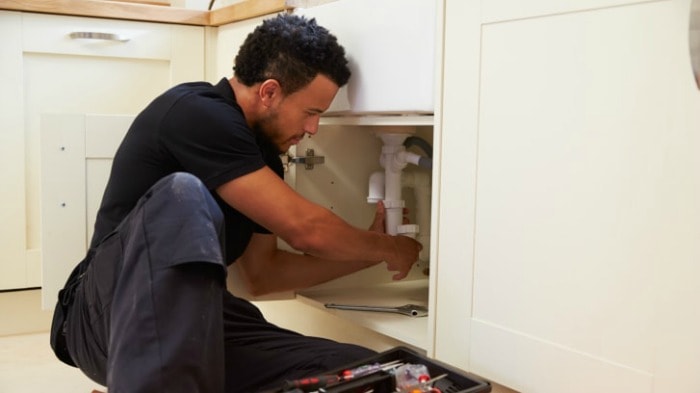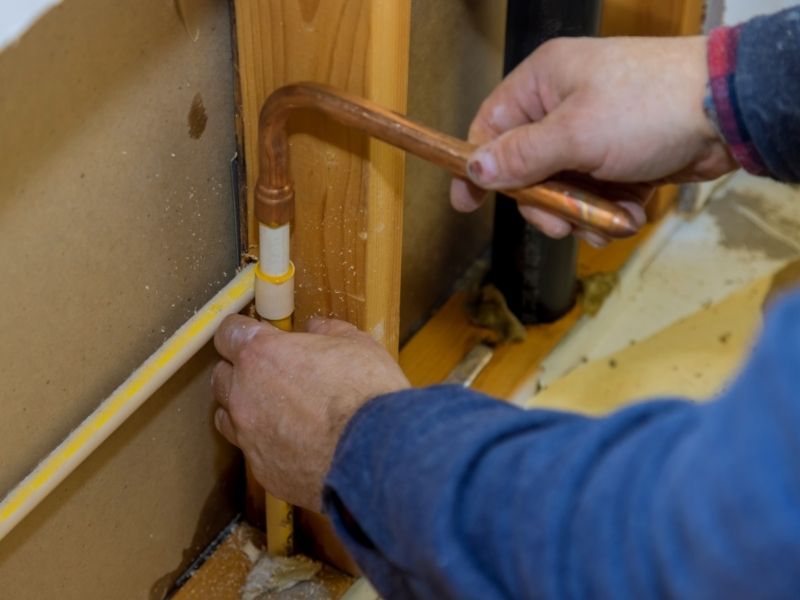Understanding Plumbing Maintenance in Rental Homes
Understanding Plumbing Maintenance in Rental Homes
Blog Article
The article which follows involving Plumbing Maintenance Guide for Tenants is relatively intriguing. You should read it.

Taking care of plumbing concerns in rental residential or commercial properties effectively is critical for maintaining occupant satisfaction and protecting the property's value. Whether you're a proprietor or a home supervisor, understanding exactly how to resolve these common problems can save you time and money while making sure conformity with legal responsibilities. Right here's a detailed overview on how to deal with pipes concerns in rental properties.
File Whatever
Maintain thorough records of all reported pipes problems and the activities required to resolve them. Documentation ought to include dates, summaries of the issue, interaction with lessees, and invoices from contractors or plumbings. This info can be critical for insurance claims, tax deductions, and legal security.
Use Qualified Professionals
Always utilize accredited and insured experts for considerable pipes repairs and installations. This ensures that the job depends on code and can aid stay clear of responsibility concerns in case of crashes or more damages. It likewise assures tenants that repairs are being taken care of skillfully.
Develop Clear Communication
Encourage tenants to report any kind of pipes problems as soon as they occur. Provide numerous communication channels such as phone, e-mail, or an occupant portal to make it easy for them to connect. Trigger reactions to these reports can protect against small issues from intensifying into major problems.
Enlighten Occupants
Educate your occupants about what makes up a plumbing emergency situation and what does not. Supply guidelines on just how to manage minor concerns themselves, such as using a bettor to unclog a bathroom. Also, educate them about what they need to avoid taking down drains to avoid obstructions, such as grease, coffee premises, and non-biodegradable things.
Regular Upkeep
Execute a regular maintenance routine for all plumbing systems in your leasing residential or commercial properties. Routine checks can help recognize and deal with concerns like leaks, sluggish drains pipes, or rusty pipelines prior to they become severe. Consider employing a professional plumbing to check the residential properties annually or semi-annually.
Quick Response to Emergencies
Have a strategy in position for responding to plumbing emergencies. This need to include having the get in touch with details of trustworthy pipes solutions that offer 24/7 emergency repair services. Quick activity is essential to reduce damages in situations like burst pipelines or serious leakages.
Preventive Upgrades
Think about upgrading older pipes systems and fixtures to a lot more modern-day, efficient models. This can lower the frequency and seriousness of plumbing issues and lower long-lasting maintenance costs. It's also a selling point for potential tenants who value upgrades and modern attributes.
Lessee Move-Out Inspections
Conduct thorough pipes checks during move-out assessments to make sure that any type of problems are identified and addressed prior to a new tenant relocate. This protects against conflicts with brand-new renters over pre-existing problems and makes sure the building is in leading problem.
Understand Legal Obligations
Know your lawful obligations pertaining to plumbing and general building maintenance. Many jurisdictions call for property managers to ensure their homes are habitable and that all plumbing systems remain in good working order. Failure to resolve severe issues without delay can result in lawsuits from renters.
Occupant Reimbursements
If a pipes issue needs prompt interest and the lessee fixes the concern on their own, have a clear plan in place for compensating costs. Ensure lessees recognize they should get previous approval for higher-cost repair work unless it's an outright emergency situation.
Conclusion
Managing pipes issues in rental buildings requires a positive technique and great interaction with lessees. By remaining on top of maintenance, responding immediately to emergency situations, and using competent specialists, landlords can keep their residential properties in superb problem and keep excellent partnerships with tenants.
How to Handle Water Damage in a Rental Property
What is Water Damage?
Water damage is harm or destruction caused by water entering areas where it is not supposed to be. It can be caused by a variety of sources and can manifest in different ways. The most common examples of water damage include:
Leaking roof Plumbing leaks Appliance malfunctions Poor drainage Flooding Sewage backup Condensation Tenant negligence HVAC system issues Frozen pipes Is water damage dangerous?
Water damage itself is not inherently dangerous, but it can lead to various hazards and health risks if not promptly and properly addressed. The severity of these risks depends on the extent of the water damage, the source of the water, and how quickly it is mitigated.
Some potential dangers associated with water damage include structural damage, mold and bacterial growth, electrical hazards, water contamination, and pest infestations. In situations where mold and mildew have gone unaddressed, mold can start to develop within 24-48 hours of water exposure, and this can impose a serious health risk to tenants. In particular, mold spores and damp conditions can lead to respiratory issues and even make existing health problems worse, such as allergies, asthma, or immune disorders.
Water Damage in an Apartment - Who is Responsible?
If the water damage is caused by the tenant’s negligence, the tenant is responsible for the cost of repairs. If the water damage is caused by a defect in the property, the landlord is responsible for the cost of repairs. If the water damage is a result of natural causes, such as excessive rain, then the landlord is responsible, since the water intrusion likely occurred due to a defect in the property. Landlord Responsibility water damage in rental property
Since maintaining habitability is the landlord’s legal responsibility, landlords are responsible for any resulting structural damage caused by water damage. These structural damages may include damage to walls, roofs, ceilings, and flooring. If water damage has affected the rental property’s original structure, the landlord is responsible for repairing or replacing those materials. Therefore, landlords should have property insurance that covers the structural components of their rental property so that they can receive help with the costs of covered events.
Preventative measures can also help landlords avoid massive renovations. Preventative maintenance may include conducting regular inspections to identify and address potential water damage before it becomes a major and urgent problem.
If a landlord fails to meet their responsibilities regarding water damage, it can lead to legal disputes and potential liability. Tenants who believe their landlord is not addressing water damage issues in accordance with California law can seek legal advice or contact local housing authorities for assistance.
https://www.goodlifemgmt.com/blog/water-damage-in-a-rental-property/

Hopefully you enjoyed our piece about . Many thanks for taking time to read our article. If you appreciated our blog posting please be sure to share it. We value your readership.
Report this page